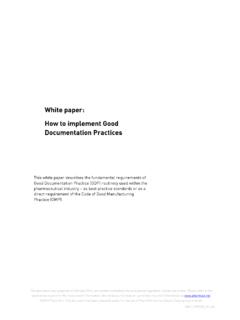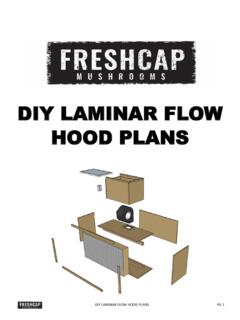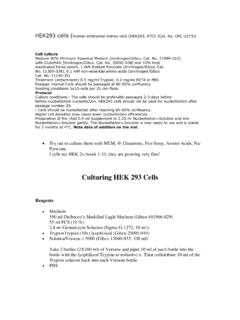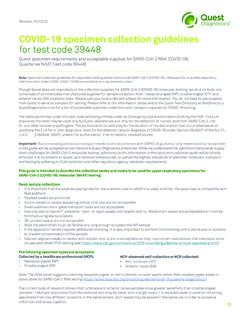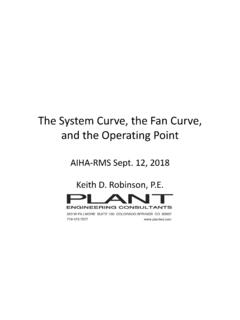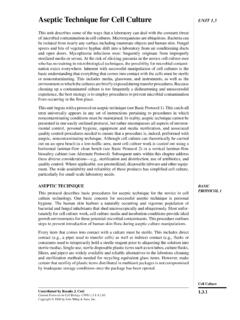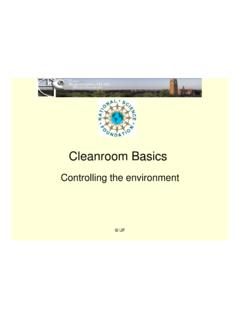Transcription of Prevention of Contamination and Cross-Contamination in ...
1 This document was prepared in November 2021. Any content including links and quoted regulation may be out of date. Please refer to the appropriate source for the most recent information. We endeavour to keep an up-to-date record of information at 2021 PharmOut-an ISO 9001 certified company. This document is solely for the use of PharmOut and its clients. Copying is prohibited. MKT_TMP200_01_r08 White paper: Prevention of Contamination and cross- Contamination in medicinal manufacturing facilities This white paper explores the methods of preventing Contamination and cross- Contamination in manufacturing facilities.
2 This paper has two objectives: to identify potential contributors of Contamination and cross- Contamination to discuss concepts on how to minimize and prevent Contamination and cross- Contamination occurring within a manufacturing facility. PharmOut white paper: Prevention of Contamination and cross- Contamination in medicinal manufacturing facilities PharmOut Pty Ltd, ABN: 85 117 673 766, Unit 10, 24 Lakeside Drive, Burwood East, Victoria 3151 Ph: +61 3 9887 6412 | Email: | Web: 2021 PharmOut-an ISO 9001 certified company. This document is solely for the use of PharmOut and its clients.
3 Copying is prohibited. Page 2 of 10 Introduction The manufacture of medicinal products involves a series of processing steps using various equipment and ancillary systems within a facility, and each step/equipment/system can pose a Contamination risk. In the pharmaceutical industry, Contamination is the undesired introduction of impurities of a physical, chemical, or microbiological nature into or onto a starting material, intermediate materials, Active Pharmaceutical Ingredients (APIs), or finished products and can occur at any stage of the manufacturing process, including but not limited to: production sampling packaging or repackaging storage or transport.
4 Cross- Contamination is the Contamination of a starting material, intermediate, or finished product with another starting material or product. Manufacturers are expected to not only have processes in place to avoid Contamination scenarios but also provide documented evidence that activities to prevent Contamination have been performed, as well as evidence that Contamination has not occurred ( from testing). The root cause for Contamination and cross- Contamination can range from technical issues to quality system deficiencies, and some common sources of Contamination are identified in Figure 1 below.
5 Figure 1: Sources of Contamination . Equipment Design Facility Design Layout Airflow and HVAC Contamination Sources Personnel and Clothing Process Process PharmOut white paper: Prevention of Contamination and cross- Contamination in medicinal manufacturing facilities PharmOut Pty Ltd, ABN: 85 117 673 766, Unit 10, 24 Lakeside Drive, Burwood East, Victoria 3151 Ph: +61 3 9887 6412 | Email: | Web: 2021 PharmOut-an ISO 9001 certified company. This document is solely for the use of PharmOut and its clients. Copying is prohibited. Page 3 of 10 Design opportunities The equipment, facility and Heating Ventilation and Air Conditioning (HVAC) system design is the first and critical step in preventing Contamination and cross- Contamination .
6 Area Preventive Measures Facility The facility must: have smooth, impervious and unbroken surfaces (to minimise shedding and accumulation of particles) which are easily cleaned be of suitable size, construction and location to facilitate suitable cleaning, maintenance and appropriate operation have adequate space for placement of equipment as well as production and packaging materials consider the sequence of operation during the design phase; paying particular attention to the location of equipment and removal of unnecessary traffic have an adequate internal temperature, ventilation and lighting have adequate segregation of areas, materials, products, and components to further reduce the risk of cross- Contamination .
7 Equipment All equipment should have smooth inert surfaces which are not additive or adsorptive and be installed in an area that is easily cleaned. If the equipment is difficult to clean, then consider using it for a dedicated purpose. Pipes, ducts and doorways should be installed so they do not lead to recesses that are difficult to clean. HVAC system Airborne contaminants should be controlled through effective ventilation and filtration (the criteria is detailed in the next section, Effective Airflow/Extraction and HVAC Design). PharmOut white paper: Prevention of Contamination and cross- Contamination in medicinal manufacturing facilities PharmOut Pty Ltd, ABN: 85 117 673 766, Unit 10, 24 Lakeside Drive, Burwood East, Victoria 3151 Ph: +61 3 9887 6412 | Email: | Web: 2021 PharmOut-an ISO 9001 certified company.
8 This document is solely for the use of PharmOut and its clients. Copying is prohibited. Page 4 of 10 Effective airflow/extraction and HVAC design External contaminants should be removed by effective filtration of the supply air, to retain the required cleanroom classification. Internal contaminants should be controlled by displacing the airflow. The pressure differentials should be of sufficient magnitude to ensure containment and Prevention of flow reversal without creating turbulence. If a recirculation system is installed, the ratio of fresh air to recirculated air must be justified.
9 Where possible, ventilation dampers and filters should be designed and positioned to be accessible from outside the manufacturing areas for ease of maintenance. Directional airflow within production or primary packing areas may be used to assist in preventing Contamination . Example: Unidirectional (or laminar ) airflow systems are effective in managing Contamination , particularly in grade A areas, which have a low airborne particle limit. This is achieved by passing air through HEPA filters and directing it downward in a constant parallel stream towards filters located on walls near the cleanroom floor or through raised perforated floor panels, which is then recirculated (refer to Figure 2 below).
10 This is referred to as vertical laminar flow. Unidirectional airflow systems can also run horizontally from wall to wall. Figure 2: Vertical laminar Flow. An air velocity of between and m/s is sufficient to: remove particles before they settle onto surfaces overcome obstructions from equipment and people, and be uniform. PharmOut white paper: Prevention of Contamination and cross- Contamination in medicinal manufacturing facilities PharmOut Pty Ltd, ABN: 85 117 673 766, Unit 10, 24 Lakeside Drive, Burwood East, Victoria 3151 Ph: +61 3 9887 6412 | Email: | Web: 2021 PharmOut-an ISO 9001 certified company.




